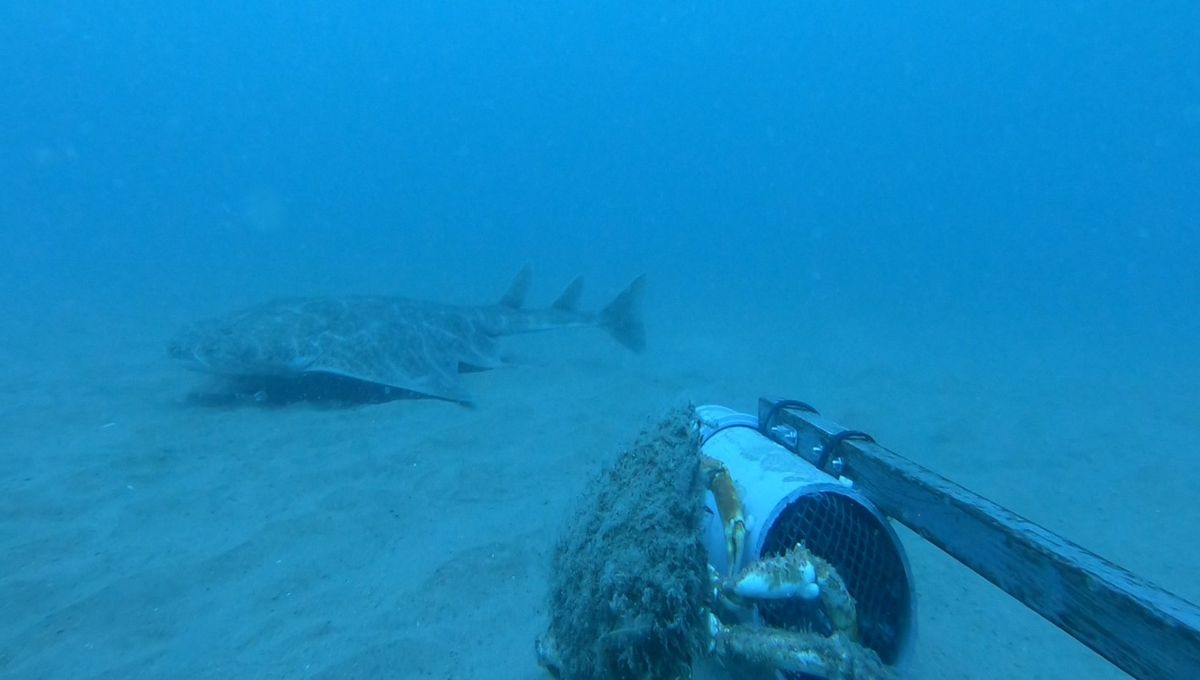
Scientists conducting research in the waters of Cardigan Bay, Wales were treated to a rare sight recently, as their cameras captured footage of a critically endangered angelshark (Squatina squatina), one of the world’s rarest shark species.
The camera that nabbed the footage of the shark wasn’t placed in the bay with the specific purpose of spotting one. Instead, it’s one of a series of cameras that were deployed as part of the Wildlife Trust of South & West Wales’ (WTSWW) Dolphin Diet Detectives project, which aims to find out more about the diet of the dolphins in Cardigan Bay, as well as the area’s marine diversity in general.
“We were thrilled to record an Angelshark in Cardigan Bay, a rare and exciting encounter. Before this project started, Angelsharks hadn’t been captured on film in Cardigan Bay since 2021,” said Dr Sarah Perry, Marine Conservation and Research Manager at the WTSWW, in a statement.
When you dig a little deeper, it comes as little surprise that it’s been so long since an angelshark was last spotted here.
Historically, the range of angelsharks was pretty impressive, extending along parts of the coast of multiple European countries, as well as some in North Africa. Spotting one along the Welsh coast – or any part of the UK coast for that matter – wasn’t anything to write home about (unless you’re a big shark fan like us, of course).
At least, that was the case in the 20th century. According to the IUCN, while the exact number of angelsharks throughout their range is unknown, there have been multiple reports of steep population declines and fragmentation. The organization currently lists the species as “Critically Endangered” – that’s one level down from going extinct in the wild – with a decreasing population, and estimates that the angelshark population size has reduced by at least 80 percent over the roughly the last 45 years.
Alongside the degradation of their habitat, one of the biggest factors contributing to this decline is thought to be bottom trawling. Angelsharks live and feed along the seafloor – and that makes them particularly vulnerable. Combine that with a slow reproduction rate, and you’ve got a recipe for extinction.
But this isn’t a vulnerability unique to angelsharks, as Sir David Attenborough’s latest film OCEAN recently revealed when it brought to our screens world-first footage demonstrating the devastating impact of bottom trawling.
In the footage, everything from rays to cephalopods can be seen fleeing from the metal and rope of a bottom trawler, leaving a trail of destruction in its wake.
“It’s happening everywhere around the ocean, including in many of our protected areas. The difference being that this is as destructive as bulldozing your local ancient woodland, or the Amazon rainforest,” Toby Nowlan, who was director and producer on OCEAN, told IFLScience.
“If my local ancient woodland, Leigh Woods, was just bulldozed, the entire city would be up in arms, but this is what’s happening underwater. The whole reason [people aren’t up in arms about trawling] is that it’s remained hidden from view. It’s happened just below the surface. Outside, out of mind, so it’s remained concealed,” Nowland continued.
“That’s why this was such a big mission to bring this clearly on screen for the first time, because this is something that doesn’t have to happen in our marine protected areas. It could end tomorrow, if we choose it to, and it would be to the benefit of every living thing on the planet.”
Thankfully, change might be on the horizon – and spotting the angelshark could help along the way.
“This sighting comes at a crucial time, as the Senedd [Welsh Parliament] and UK Government discuss a ban on bottom trawling in Marine Protected Areas,” said Perry, adding that the Dolphin Diet Detectives project underwater cameras “reveal the incredible diversity of life on the seabed.”
“These findings highlight the urgent need to protect these fragile habitats from damaging activities like bottom trawling.”
Source Link: Catch A Glimpse Of One Of The World’s Rarest Sharks In Dreamy New Footage